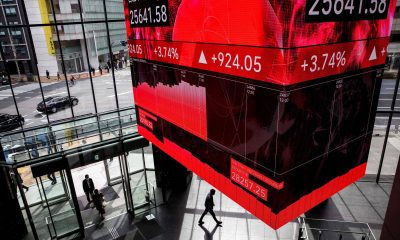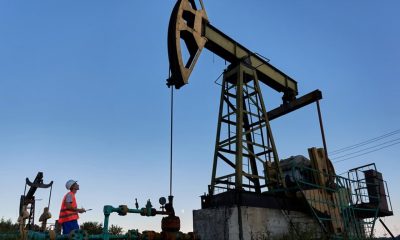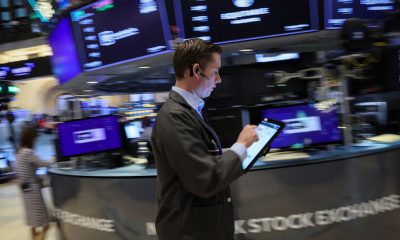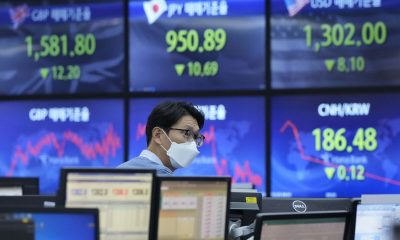Economy
Stocks gain, dollar stumbles as US averts default and Fed skip bets rise
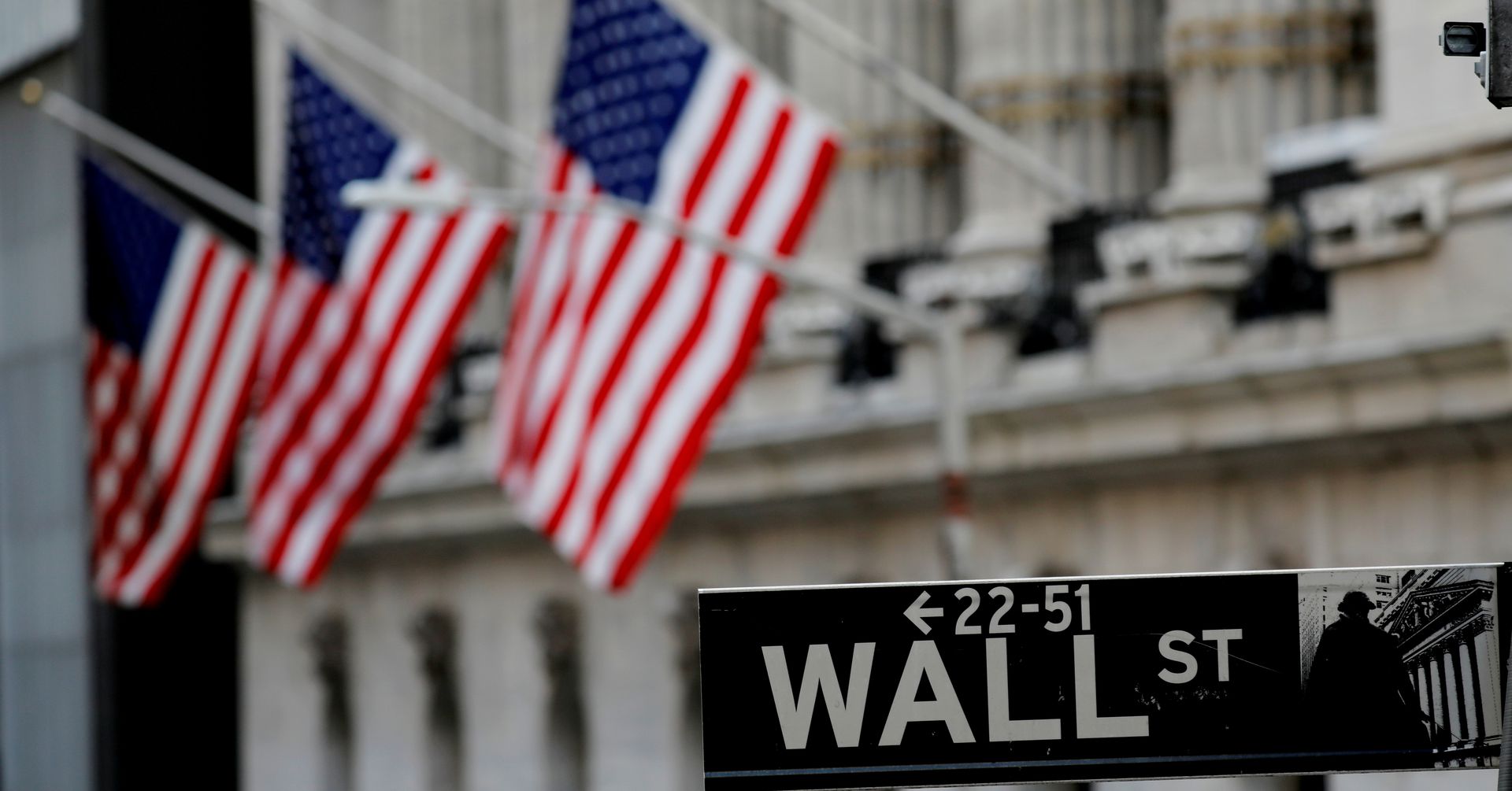
Global stocks and commodities rose on Friday while the dollar headed for its biggest weekly drop since March, as sentiment was buoyed by signs the Fed will skip a rate hike at its next meeting and by the approval of U.S. debt ceiling legislation.
Markets are now focused on U.S. jobs data due at 0830 EST (1230 GMT), the most significant macroeconomic release of the week, for more cues on the Federal Reserve’s rate hike path.
The U.S. Labor Department’s employment report is likely to show nonfarm payrolls increased by 190,000 jobs last month after rising 253,000 in April, according to a Reuters survey of economists.
“The release is really going to dictate the future of Fed policy after the speech of the vice chair-designate Jefferson that likely took a June rate hike off the table,” said Jeff Schulze, head of economic and market strategy at Clearbridge
“The only way that (a June rate increase) is going to be in play is if you see a large beat to the upside of both payrolls and CPI.”
Vice chair nominee Philip Jefferson said on Wednesday skipping a rate hike at a coming meeting would allow the rate-setting Federal Open Market Committee to see more data before making decisions about the extent of additional policy firming, remarks echoed by several other Fed speakers.
Jefferson’s nomination as vice chair is still pending approval from the U.S. Senate.
Market pricing indicates roughly a 75% chance the Fed will hold rates steady at its upcoming meeting, according to the CME’s Fedwatch tool, though there is roughly a 50% chance of a 25-basis-point hike at one of the Fed’s June or July meetings.
The dovish tone caused a rally in U.S. Treasuries. The 10-year yield, last at 3.6104%, was steady on the day on Friday, but was set for a weekly drop of around 20 basis points, its biggest weekly fall since mid March. [US/]
That helped shares to rally, and Europe’s broad STOXX 600 index rose 1% and headed for a second day of gains.
European mining stocks increased 4.4%, boosted by a Bloomberg report China is working on new measures to support its property market.
MSCI’s broadest index of Asia Pacific shares outside Japan rose 2.3% earlier on Friday, with Japan’s Nikkei ending the day at its highest close since July 1990. (T)
Nasdaq and S&P 500 futures were both up around 0.5% after each index reached nine-month closing highs on Thursday. [.N]
DEBT DEAL
Boosting the mood was the U.S. Senate passing bipartisan legislation backed by President Joe Biden that lifts the government’s $31.4 trillion debt ceiling, averting what would have been a first-ever default.
“The fact that this is potentially getting resolved earlier does remove some potential distortions,” said Phil Shucksmith, portfolio manager at Newton Investment Management
Investors’ focus now will turn to the market impact of the U.S. Treasury issuing more bonds to refill its empty coffers, which could put pressure on liquidity, or ready cash available to banks.
“We’ve probably got some degree of rebuilding of that treasury general account,” said Shucksmith, which, along with quantitative tightening, “means I think there’s going to be tightening of financial conditions.”
Lower U.S. yields were also playing out in currency markets with the dollar index, which measures the U.S. currency against six major peers, steady on the day at 103.49, but set for a weekly fall of 0.7%, its biggest weekly decline since March.
Gains against the dollar have been shared out fairly broadly among other currencies, but sterling was to the fore, set for a weekly gain of 1.4%, its most since December.
The euro is up 0.27% against the dollar this week, dragged by lower European yields after inflation showed signs of slowing, welcome news for the European Central Bank and reinforcing market bets that the ECB too could be done with interest rate hikes in the coming few months. [GVD/EUR]
The bullish sentiment, softer dollar and China property news helped push oil prices higher, with U.S. crude up 1.7% at $71.29 per barrel and Brent at $75.53, up 1.7%. Markets are also weighing the likelihood of price-supportive OPEC+ production cuts over the weekend.[O/R]
Copper prices were heading for their first weekly gain since April with other metals trading higher too. [MET/L]
Spot gold was up marginally at $1,979 an ounce, but set for its biggest weekly gain in nearly two months, as a softer dollar and lower yields bolstered the bullion’s appeal. [GOL/]
Economy
Russian central bank says it needs months to make sure CPI falling before rate cuts -RBC


© Reuters. Russian Central Bank Governor Elvira Nabiullina attends a news conference in Moscow, Russia June 14, 2019. REUTERS/Shamil Zhumatov/File Photo
MOSCOW (Reuters) – Russia’s central bank will need two to three months to make sure that inflation is steadily declining before taking any decision on interest rate cuts, the bank’s governor Elvira Nabiullina told RBC media on Sunday.
The central bank raised its key interest rate by 100 basis points to 16% earlier in December, hiking for the fifth consecutive meeting in response to stubborn inflation, and suggested that its tightening cycle was nearly over.
Nabiullina said it was not yet clear when exactly the regulator would start cutting rates, however.
“We really need to make sure that inflation is steadily decreasing, that these are not one-off factors that can affect the rate of price growth in a particular month,” she said.
Nabiullina said the bank was taking into account a wide range of indicators but primarily those that “characterize the stability of inflation”.
“This will take two or three months or more – it depends on how much the wide range of indicators that characterize sustainable inflation declines,” she said.
The bank will next convene to set its benchmark rate on Feb. 16.
The governor also said the bank should have started monetary policy tightening earlier than in July, when it embarked on the rate-hiking cycle.
Economy
China identifies second set of projects in $140 billion spending plan


© Reuters. FILE PHOTO: Workers walk past an under-construction area with completed office towers in the background, in Shenzhen’s Qianhai new district, Guangdong province, China August 25, 2023. REUTERS/David Kirton/File Photo
SHANGHAI (Reuters) – China’s top planning body said on Saturday it had identified a second batch of public investment projects, including flood control and disaster relief programmes, under a bond issuance and investment plan announced in October to boost the economy.
With the latest tranche, China has now earmarked more than 800 billion yuan of its 1 trillion yuan ($140 billion) in additional government bond issuance in the fourth quarter, as it focuses on fiscal steps to shore up the flagging economy.
The National Development and Reform Commission (NDRC) said in a statement on Saturday it had identified 9,600 projects with planned investment of more than 560 billion yuan.
China’s economy, the world’s second largest, is struggling to regain its footing post-COVID-19 as policymakers grapple with tepid consumer demand, weak exports, falling foreign investment and a deepening real estate crisis.
The 1 trillion yuan in additional bond issuance will widen China’s 2023 budget deficit ratio to around 3.8 percent from 3 percent, the state-run Xinhua news agency has said.
“Construction of the projects will improve China’s flood control system, emergency response mechanism and disaster relief capabilities, and better protect people’s lives and property, so it is very significant,” the NDRC said.
The agency said it will coordinate with other government bodies to make sure that funds are allocated speedily for investment and that high standards of quality are maintained in project construction.
($1 = 7.1315 renminbi)
Economy
Russian central bank says it needs months to make sure CPI falling before rate cuts -RBC


© Reuters. Russian Central Bank Governor Elvira Nabiullina attends a news conference in Moscow, Russia June 14, 2019. REUTERS/Shamil Zhumatov/File Photo
MOSCOW (Reuters) – Russia’s central bank will need two to three months to make sure that inflation is steadily declining before taking any decision on interest rate cuts, the bank’s governor Elvira Nabiullina told RBC media on Sunday.
The central bank raised its key interest rate by 100 basis points to 16% earlier in December, hiking for the fifth consecutive meeting in response to stubborn inflation, and suggested that its tightening cycle was nearly over.
Nabiullina said it was not yet clear when exactly the regulator would start cutting rates, however.
“We really need to make sure that inflation is steadily decreasing, that these are not one-off factors that can affect the rate of price growth in a particular month,” she said.
Nabiullina said the bank was taking into account a wide range of indicators but primarily those that “characterize the stability of inflation”.
“This will take two or three months or more – it depends on how much the wide range of indicators that characterize sustainable inflation declines,” she said.
The bank will next convene to set its benchmark rate on Feb. 16.
The governor also said the bank should have started monetary policy tightening earlier than in July, when it embarked on the rate-hiking cycle.

 Forex2 years ago
Forex2 years agoForex Today: the dollar is gaining strength amid gloomy sentiment at the start of the Fed’s week

 Forex2 years ago
Forex2 years agoHow is the Australian dollar doing today?

 Forex1 year ago
Forex1 year agoUnbiased review of Pocket Option broker

 Forex2 years ago
Forex2 years agoDollar to pound sterling exchange rate today: Pound plummeted to its lowest since 1985

 Cryptocurrency2 years ago
Cryptocurrency2 years agoWhat happened in the crypto market – current events today

 World2 years ago
World2 years agoWhy are modern video games an art form?

 Stock Markets2 years ago
Stock Markets2 years agoMorgan Stanley: bear market rally to continue

 Economy2 years ago
Economy2 years agoCrude oil tankers double in price due to EU anti-Russian sanctions

